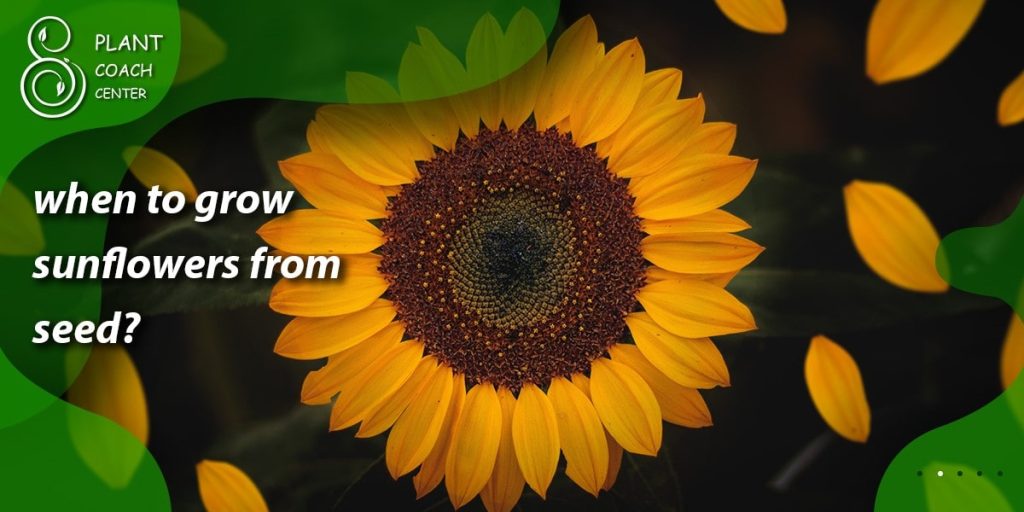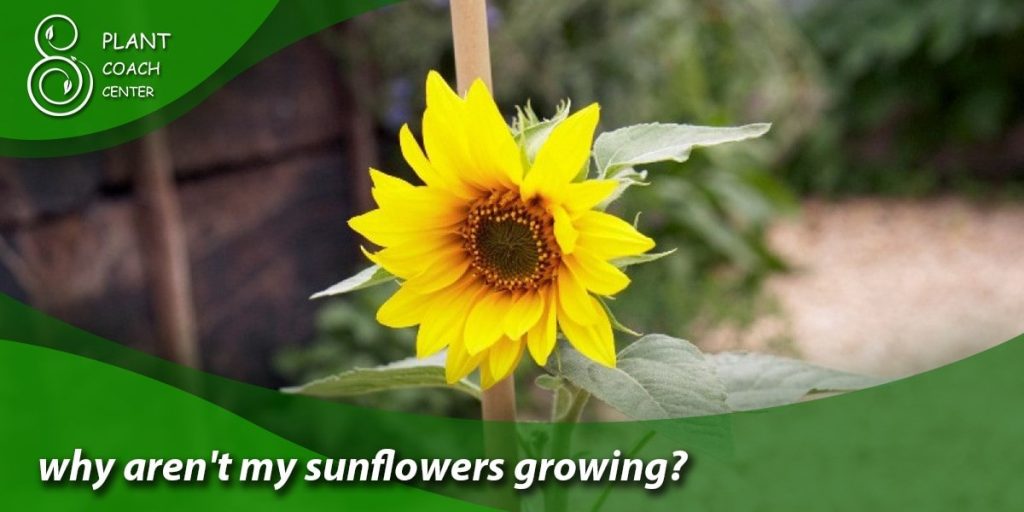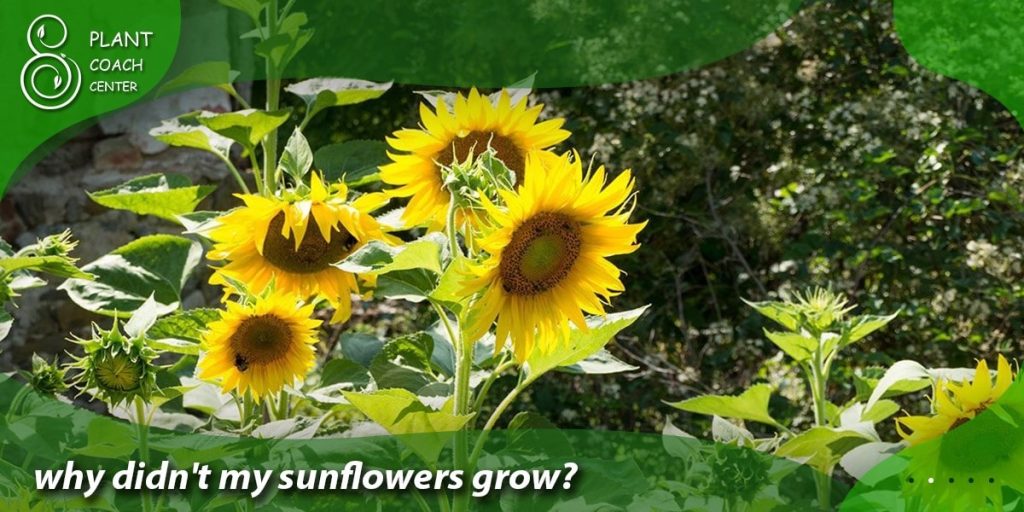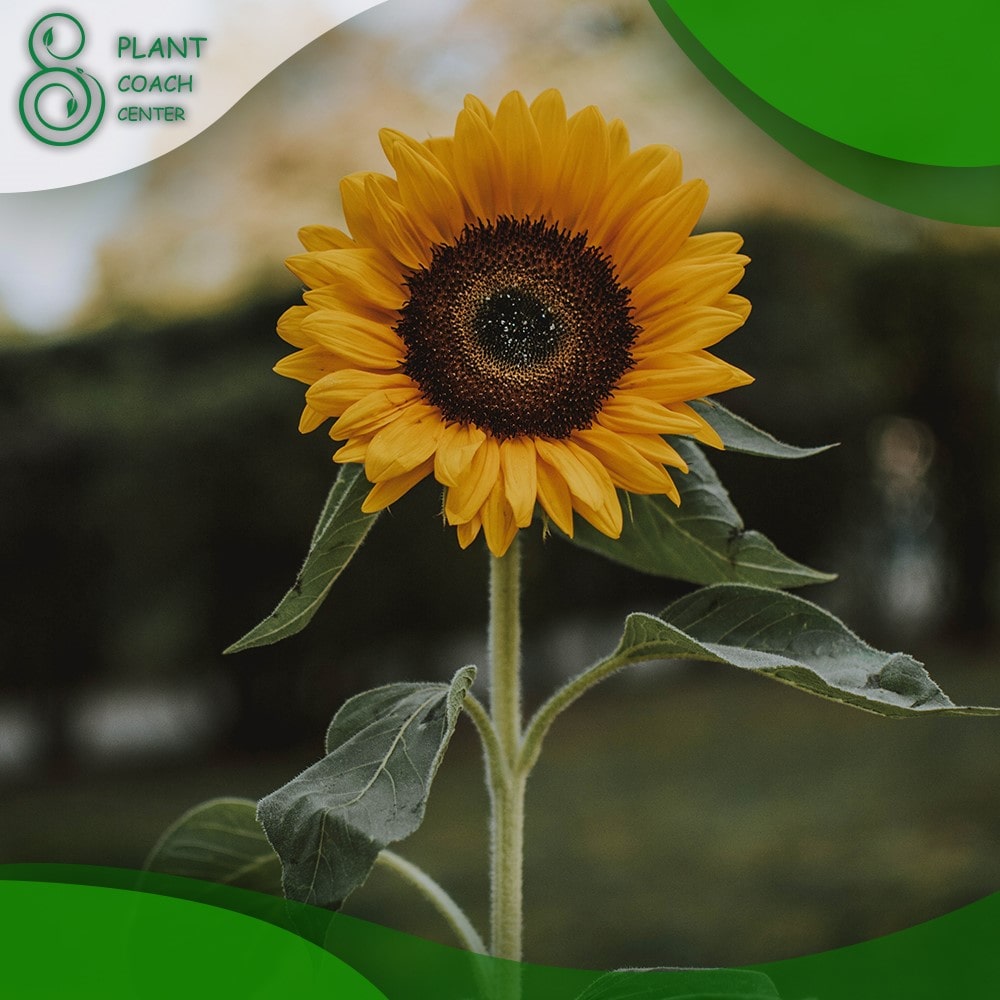When to Grow Sunflowers?
Sunflowers, those iconic symbols of radiance, are a source of joy and fascination for gardeners and nature enthusiasts alike. Their golden blooms, often towering toward the sky, bring warmth and beauty to any landscape. But behind the scenes of this natural spectacle lies a carefully orchestrated dance with Mother Nature’s timetable.
Understanding when to grow them is essential to harness the full splendor of sunflowers. It’s a journey through the seasons, exploring geographical nuances and appreciating the intricate biological clocks these flowers follow. In this article, we embark on a horticultural adventure, deciphering the secrets of timing when planting sunflowers. Whether you’re an experienced gardener seeking to fine-tune your sunflower displays or a novice eager to embrace their brilliance, join us in unraveling the mysteries of when to sow the seeds for your radiant garden.

Sunflower Seasons
Sunflowers, those radiant blooms that brighten our gardens and landscapes, are intrinsically connected to the rhythm of the seasons. Understanding the best seasons for planting sunflowers is fundamental to their successful growth. Let’s take a journey through the calendar and explore the ideal seasons for sowing and enjoying these magnificent flowers:
Spring Sunshine
Spring is the traditional season for planting sunflowers in many regions. As temperatures rise and the earth awakens from its winter slumber, it’s the perfect time to sow sunflower seeds. By planting in spring, you set the stage for a vibrant summer display of these golden beauties.
Summer Splendor
While spring planting is a classic choice, you can still plant sunflowers in early summer, especially in areas with mild winters or short growing seasons. This allows you to enjoy their sunny blooms later in the summer or early fall.
Fall’s Grace
For regions with long growing seasons or mild autumns, fall can be a surprising time to plant sunflowers. Late summer or early fall planting can result in a spectacular display as the weather cools, extending the sunflower season into autumn.
Winter Wonders
In areas with mild winters, sunflower growth can continue throughout the cooler months. By planting sunflower seeds in late fall, you can enjoy early spring blooms, adding a touch of sunshine to the changing landscape.
Choosing the Right Sunflower Variety
When cultivating sunflowers, variety is not just the spice of life; it’s the key to a garden that can burst into glorious bloom throughout the year. Sunflowers come in various shapes, sizes, and colors, each with unique charm and growth characteristics. Selecting suitable sunflower varieties that align with your gardening goals and local climate conditions is crucial to determining when to grow sunflowers effectively. Here’s a guide to help you choose the perfect sunflower varieties for your garden:
Early Bloomers
If you’re eager to witness sunflowers in their full glory early in the season, consider varieties like ‘Sunrich’ or ‘Lemon Queen.’ These sunflowers typically start blooming in early to mid-summer.
Mid-Season Marvels
Varieties like ‘Autumn Beauty’ and ‘Moulin Rouge offer a balance between early and late bloomers, gracing your garden with vibrant colors during the heart of summer.
Late Bloomers
Late blooming sunflowers, such as the ‘Russian Giant’ or ‘Chianti,’ take their time to reach their full potential, making them ideal for an extended summer display and even into early fall.
Compact Delights
If your garden has limited space, consider compact sunflower varieties like ‘Teddy Bear’ or ‘Sunspot.’ Their more diminutive stature is perfect for containers and smaller garden areas.
Tall and Majestic
For those with more space and a desire for dramatic impact, go for tall varieties like ‘Skyscraper’ or ‘Kong.’ These giants can reach heights of 12 feet or more.
Multicolored Sunflowers
To add a pop of diversity to your sunflower garden, explore multicolored varieties like ‘Strawberry Blonde’ or ‘Ring of Fire,’ which showcase a beautiful blend of hues.
Year-Round Sunflowers
If you’re lucky to live in a region with a mild climate, consider varieties like ‘Ring of Fire’ or ‘Vincent’s Choice’ that can bloom year-round with proper care and protection from extreme conditions.

Sunflower Gardening by Region
Sunflowers, with their radiant faces and vibrant personalities, can thrive in various climates and regions. However, the key to successful sunflower gardening lies in understanding the unique characteristics of your local environment. Here’s how to align your sunflower gardening with the specific conditions of your region:
Northern Climates
In colder northern regions, spring is the optimal time to plant sunflowers. Wait until the last frost has passed and the soil has warmed before sowing your sunflower seeds. Varieties with shorter growing seasons are ideal.
Southern Climates
In the warm and sunny South, sunflowers can be grown nearly year-round. However, avoid planting during the hottest summer months. Fall and early spring are excellent times to sow seeds for a lush sunflower display.
Coastal Regions
Coastal areas often have milder climates. Consider planting sunflowers in late winter or early spring to enjoy their blooms before the summer heat sets in. Coastal breezes can help with ventilation and pollination.
Arid Deserts
Desert regions require careful consideration of water and heat. Plant sunflowers in the cooler months and provide ample water to moisten the soil. Select drought-tolerant varieties like ‘Autumn Beauty.’
Mountainous Terrain
Mountainous areas may have shorter growing seasons due to cooler temperatures. Opt for fast-maturing sunflower varieties and sow seeds once the threat of frost has passed in late spring or early summer.
Urban Gardens
Urban gardens may create their microclimates. Pay attention to the reflective surfaces and heat-absorbing materials in your city garden. These can affect the local temperature, influencing the timing of sunflower planting.
Indoor Sunflower Gardens
For those in regions with extreme climates, consider growing sunflowers indoors. This allows for year-round enjoyment while controlling environmental conditions.

Moonflower and Sunflower Companions
In the gardening world, companionship isn’t just about the company—it’s about creating harmonious relationships between plants that enhance each other’s beauty and vitality. When it comes to sunflowers, they have a natural companion that adds a touch of mystique to your garden: the moonflower. Let’s explore how this celestial pairing can elevate your garden’s charm:
Yin and Yang
Sunflowers and moonflowers, with their contrasting names and characteristics, represent a captivating duality in your garden. Sunflowers exude warmth, vibrancy, and energy, while moonflowers bring a sense of calm, serenity, and elegance. Together, they create a balanced and visually stunning landscape.
Day and Night
Sunflowers are known for their vibrant, sun-loving nature, blooming during the day and following the sun’s path across the sky. In contrast, moonflowers are nocturnal, unfurling their fragrant, white blossoms under the cover of night, filling the air with their sweet scent.
Visual Drama
Planting sunflowers and moonflowers side by side or nearby creates a visual spectacle. During the day, sunflowers shine in the sunlight, and as the day transitions to night, moonflowers take center stage, providing a delightful transition of color and fragrance.
Attracting Pollinators
Both sunflowers and moonflowers attract pollinators like bees, moths, and hummingbirds, ensuring a thriving ecosystem in your garden. The diversity of daytime and nighttime visitors adds depth to your garden’s biodiversity.
Garden Design
The pairing of sunflowers and moonflowers allows for creative garden design. Consider planting sunflowers in the foreground or along garden borders, with moonflowers climbing trellises or fences in the background.
Sowing and Timing
To synchronize their blooms, sow sunflower seeds in early spring and moonflower seeds a few weeks later. This staggered planting ensures continuous color and fragrance throughout the day and night.
Creating Memories
The presence of sunflowers and moonflowers in your garden offers aesthetic pleasure and the opportunity to create lasting memories. Daytime gatherings and strolls in your garden will be enchanting with this celestial pair as companions.
The Science of Sunflower Photoperiodism
Sunflowers are not just beautiful; they’re also astute timekeepers, following the cues of daylight hours with precision. The phenomenon that governs their blooming based on day length is called photoperiodism. Understanding the science behind sunflower photoperiodism is essential for knowing when to grow these radiant flowers and how to maximize their growth:
Daylight as a Trigger
Sunflower growth and blooming are strongly influenced by the number of daylight hours. When sunflowers sense longer days, they initiate the flowering process.
Long-Day and Short-Day Varieties
Sunflowers can be categorized into long-day and short-day varieties, depending on their photoperiodic responses. Long-day sunflowers require more daylight hours to bloom, while short-day sunflowers need fewer hours.
Genetic Control
Photoperiodism is genetically controlled in sunflowers. It’s encoded in their DNA and inherited from generation to generation.
Spring and Summer Blooms
Most common sunflowers are long-day varieties, making spring and early summer the prime time for their growth and flowering. They typically require 14 to 16 hours of daylight to initiate blooming.
Fall Blooming
Short-day sunflowers are exceptions, as they bloom in response to shorter daylight hours. These varieties are ideal for late summer or fall planting, with blooming typically triggered by 10 to 12 hours of daylight.
Winter Strategies
In regions with mild winters, some sunflowers, like ‘Evening Sun’ or ‘Vincent’s Choice,’ can be grown through the winter, provided they receive adequate protection and warmth.
Photoreceptors and Flowering Hormones
Behind the scenes, photoreceptors in sunflower leaves detect changes in daylight length. This information triggers hormonal responses within the plant, initiating flowering processes.

Sunflowers in Indoor Gardens
While sunflowers are known for their love of the great outdoors and basking in the sun, there’s a delightful secret you can unlock – growing sunflowers indoors. With the proper care and attention, you can enjoy the vibrant beauty of sunflowers year-round right in the comfort of your home. Here’s how to make your indoor garden bloom with these sunny giants:
Selecting the Right Varieties
Choose dwarf or compact sunflower varieties that are well-suited for indoor cultivation. ‘Sunspot’ and ‘Teddy Bear’ are excellent choices due to their manageable size.
Pots and Containers
Use large, deep pots or containers with good drainage. Ensure they can accommodate the sunflower’s root system, as they require space to thrive.
Soil and Light
Opt for well-draining potting soil and place your indoor sunflowers in a location with plenty of sunlight. A south-facing window with at least 6-8 hours of direct sunlight is ideal.
Watering and Humidity
Keep the soil consistently moist but not waterlogged. Indoor environments can be dry, so consider using a humidity tray or regularly misting the leaves to provide the necessary moisture.
Support and Rotation
Sunflowers may need support as they grow. Use stakes or dowels to prop up taller varieties. Also, rotate the pots to ensure even exposure to sunlight for symmetrical growth.
Pollination
Indoors, you may need to assist with pollination. Gently tap the flower heads to disperse pollen and encourage seed development.
Reaping the Rewards
Once your indoor sunflowers bloom, you can enjoy their radiant beauty and even save seeds for future indoor or outdoor plantings.
Overwintering
You can overwinter indoor sunflowers in colder climates by moving them to a calm, well-lit area. This allows them to rest and resume growth in the spring.

Succession Planting for Continuous Blooms
Imagine a garden always in bloom, a tapestry of colors and textures that changes as the seasons progress. With the art of succession planting, you can make this dream a reality with sunflowers. Succession planting involves sowing seeds or transplanting young plants at various intervals to ensure a continuous supply of blooms throughout the growing season. Here’s how to implement this strategy and keep your garden dancing with sunflowers from early spring to late fall:
Planning Your Sunflower Stages
Divide your garden into sections or rows, each designated for a specific stage of sunflower growth. This planning is crucial for seamlessly transitioning from one sunflower display to another.
Selection of Sunflower Varieties
Choose a mix of early, mid-season, and late-blooming sunflower varieties. This diversity ensures that as one group of sunflowers starts to fade, another is ready to take center stage.
Sowing Schedule
Consult seed packets or plant information for recommended planting times for each sunflower variety. Plan your planting schedule accordingly, with the earliest varieties going in first.
Continuous Planting
As the first sunflowers bloom, plant a new batch of seeds or transplants in the designated stage area. Continue this process throughout the growing season.
Care and Maintenance
Maintain consistent watering, fertilizing, and care for each stage of sunflowers to ensure healthy growth and vibrant blooms.
Harvest and Seed Saving
Remember to harvest the mature sunflower heads as they ripen, but leave a few for seeds if you plan to save them for future planting.
Enjoy the Ever-Changing Garden
With succession planting, your garden will evolve continually, offering a dynamic display of sunflowers that keeps your outdoor space vibrant and captivating.
Conclusion
In the gardening world, timing is the brush, and sunflowers are the vibrant strokes of color that paint the canvas of your outdoor space. By understanding the seasons, selecting suitable varieties, and mastering the art of succession planting, you can cultivate a garden that celebrates the ever-changing beauty of sunflowers.
With their sunny dispositions, these cheerful giants can brighten your days and bring a touch of nature’s magic to your doorstep. To continue your journey into the world of sunflowers and unlock more gardening insights, visit PlantCouchCenter.com. With knowledge in hand and seeds in the soil, your sunflower garden can become a masterpiece, a living testament to the artistry of timing and the beauty of nature’s rhythms.
Can I grow sunflowers in winter?
In mild climates, sunflowers can thrive through winter with proper care.
When do sunflowers bloom?
Sunflowers typically bloom from early summer to late fall, depending on planting times.
What sunflowers bloom year-round?
Varieties like 'Ring of Fire' can provide year-round blooms in suitable climates.







